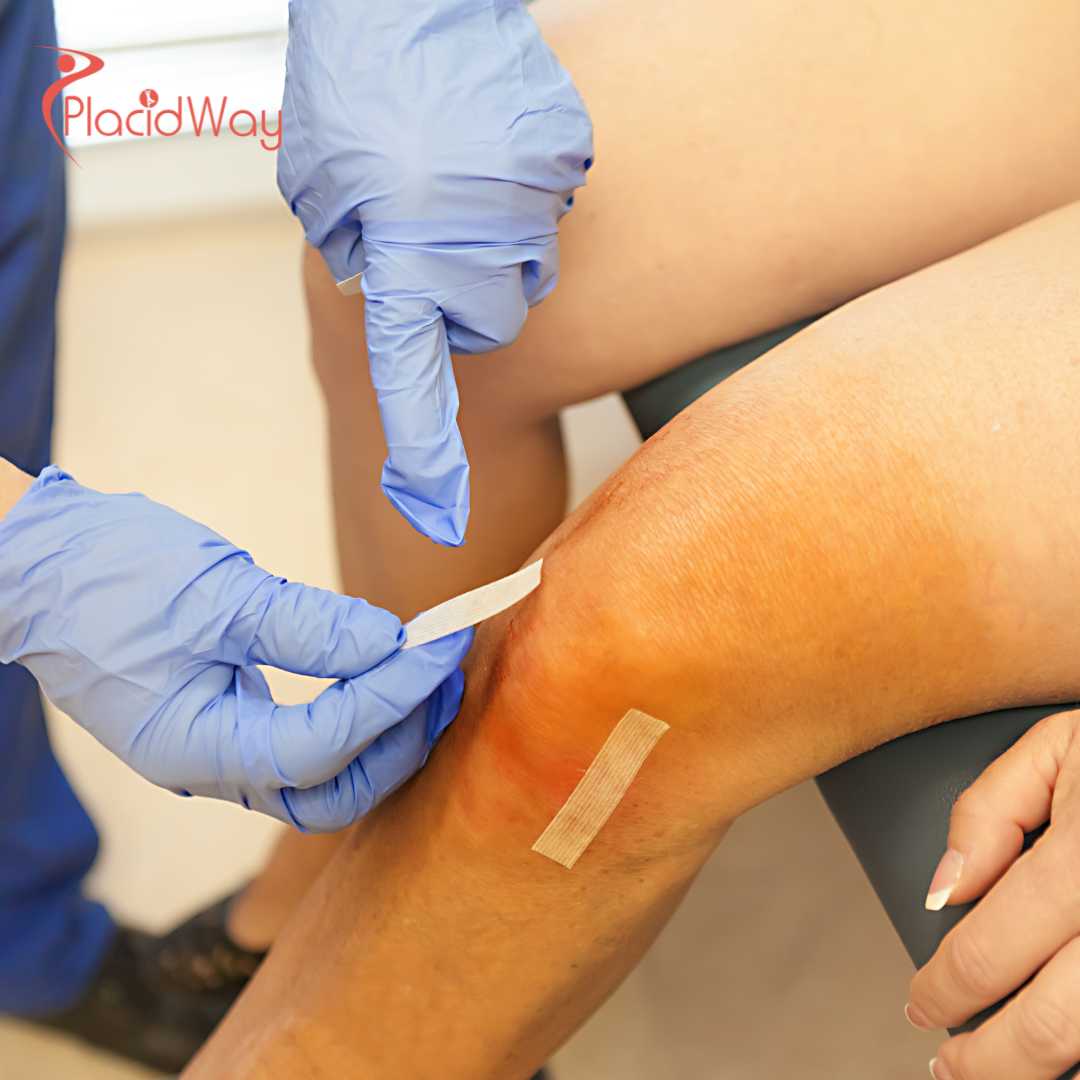
Reclaim Your Confidence: Understanding Peyronie's Disease Surgical Correction
Living with Peyronie's Disease can be challenging, both physically and emotionally. The condition, characterized by a painful curvature of the penis, can make sexual activity difficult or impossible, leading to significant distress and a loss of self-confidence. If you've been searching for solutions for a "curved penis" or "painful erections," you're not alone. Many men seek effective treatments when non-surgical approaches don't provide the desired relief.
Peyronie's Disease surgical correction offers a path to restore penile straightness, reduce pain, and regain satisfying sexual function. For many, this procedure represents a new beginning, allowing them to overcome the limitations imposed by the condition. While it's a significant decision, understanding the surgical options, recovery process, and potential outcomes is crucial.
Increasingly, individuals are exploring medical tourism for Peyronie's Disease surgery, seeking high-quality care at more accessible prices or with shorter waiting times than available in their home countries. This guide will walk you through everything you need to know about Peyronie's surgical correction, from understanding the symptoms and causes to exploring global treatment options and what to expect on your journey to recovery and renewed confidence.
What are the common symptoms of Peyronie's Disease?
Peyronie's Disease typically manifests through a series of distinct symptoms that develop over time. Recognizing these signs is the first step toward seeking appropriate treatment. Patients often describe their experience using terms like "penis bending" or "hard lump on penis shaft."
- Penile Curvature: This is the hallmark symptom, where the penis develops an abnormal bend or curve during an erection. The curve can be upward, downward, or to either side, and in some cases, can create an hourglass or indentation deformity.
- Palpable Plaque (Lump): Many men can feel a hard lump or band of scar tissue (plaque) beneath the skin on the top, bottom, or sides of the penis. This plaque is responsible for the curvature.
- Painful Erections: During the acute phase of Peyronie's, erections can be painful. This pain often subsides as the condition stabilizes, but the curvature usually remains.
- Erectile Dysfunction (ED): The plaque and curvature can interfere with the penis's ability to become fully rigid, leading to difficulty achieving or maintaining an erection firm enough for sexual intercourse.
- Penile Shortening or Narrowing: The scar tissue can cause the penis to lose length or girth, making it appear shorter or narrower than before. This "penile shortening" is a common concern for men seeking treatment.
- Difficulty with Intercourse: Due to the severe bend, pain, or ED, sexual penetration can become challenging or impossible, affecting a man's intimate relationships and psychological well-being.
If you notice any of these symptoms, especially a new "penis bend during erection" or "penile pain," it's important to consult a urologist for an accurate diagnosis.
What causes Peyronie's Disease and who is at risk?
While the exact cause of Peyronie's Disease isn't always clear, it's generally understood to be the result of a healing abnormality following trauma to the penis. Imagine a small tear in a muscle; normally, it heals perfectly. In Peyronie's, the healing process goes awry, leading to the formation of stiff, non-elastic scar tissue, or plaque, within the tunica albuginea (the sheath surrounding the erectile tissue).
Common Causes and Triggers:
- Penile Trauma: This is the most widely accepted cause. Minor injuries to the penis during sexual intercourse (e.g., bending the erect penis), sports, or other accidents can damage blood vessels and tissues, triggering an abnormal healing response.
- Autoimmune Conditions: Some theories suggest an autoimmune component, where the body's immune system mistakenly attacks its own penile tissues.
Risk Factors:
- Age: Peyronie's Disease is more common in men over 50, though it can affect men of any age. The risk increases with age.
- Genetics: There's a genetic predisposition, meaning if a family member has Peyronie's, you may be at higher risk.
- Connective Tissue Disorders: Conditions like Dupuytren's contracture (a hand condition causing fingers to bend) or plantar fasciitis (foot pain) are associated with an increased risk of Peyronie's, suggesting a shared genetic or connective tissue vulnerability.
- Certain Medical Conditions: Men with diabetes, high blood pressure, or who have undergone prostate surgery may also have a slightly elevated risk.
- Smoking: Lifestyle factors like smoking are thought to contribute to poor tissue healing and inflammation.
Understanding these factors can help in early detection and management, especially if you're searching for "Peyronie's risk factors" or "what causes penis curvature."
What types of surgical procedures are available for Peyronie's Disease?
When considering "penile straightening surgery" or "Peyronie's surgery options," it's important to know there are several surgical approaches, each suited for different degrees of curvature and patient needs:
- Plication Procedures (e.g., Nesbit Procedure, Tunical Plication):
- How it works: This is the least invasive surgical option. It involves removing or stitching a small section of tissue on the side of the penis opposite the plaque. By shortening the "long" side, the penis is straightened. Think of it like tailoring a shirt to remove a bulge.
- Best for: Men with moderate curvature (typically less than 60 degrees) and good erectile function, who are willing to accept some degree of penile shortening (usually 0.5 to 1.5 cm).
- Pros: Less invasive, preserves natural erectile function, lower risk of sensation changes.
- Cons: Inevitable penile shortening, not suitable for very severe curves or hourglass deformities.
- Incision or Excision and Grafting:
- How it works: The surgeon makes an incision into the plaque (incision) or removes it entirely (excision). The gap created is then filled with a graft material to allow the penis to expand and straighten. Grafts can be autologous (from the patient's own body, like a saphenous vein or fascia lata), allogeneic (from donor tissue), or synthetic.
- Best for: Men with severe curvature (often greater than 60 degrees), significant indentation or hourglass deformities, or those concerned about penile shortening, provided they have good erectile function.
- Pros: Excellent straightening results, minimal or no penile shortening.
- Cons: More invasive, higher risk of temporary or permanent erectile dysfunction, potential for altered penile sensation, and longer recovery.
- Penile Implants (Prosthesis):
- How it works: This procedure involves surgically inserting inflatable or malleable rods into the penis. The implant itself helps to straighten the penis. If the implant alone doesn't achieve full straightness, the surgeon may perform additional maneuvers (e.g., manual modeling, plication) during the same operation.
- Best for: Men with both Peyronie's Disease and significant, unmanageable erectile dysfunction, especially if other treatments for ED have failed.
- Pros: Effectively treats both curvature and erectile dysfunction simultaneously, provides reliable rigidity.
- Cons: Destroys natural erectile function, irreversible, potential for mechanical issues with the implant, risk of infection.
The choice of procedure depends on factors like the severity and location of the curvature, the presence and severity of ED, and the patient's individual goals and expectations.
Who is an ideal candidate for Peyronie's Disease surgical correction?
Deciding when "Peyronie's surgery is needed" is a crucial discussion with your urologist. Not every man with Peyronie's Disease requires surgery. Ideal candidates generally meet specific criteria to ensure the best possible outcomes and minimize risks:
- Disease Stability: This is paramount. The condition must be stable for at least 3 to 6 months. Stability means no worsening of curvature, no new plaques forming, and no penile pain during erections. Surgery during the acute, active phase can lead to recurrence or unsatisfactory results.
- Significant Curvature: The penile curvature must be severe enough (typically >30-45 degrees) to cause functional impairment, making sexual intercourse difficult, painful, or impossible. For some, even a lesser curvature might be functionally significant.
- Failed Non-Surgical Treatments: Candidates have usually tried non-surgical interventions (e.g., oral medications, injections like Xiaflex, vacuum erection devices) without achieving satisfactory results.
- Good General Health: Patients should be in overall good health to undergo surgery and tolerate anesthesia.
- Realistic Expectations: It's essential for candidates to have a clear understanding of the potential outcomes, including the possibility of some residual curvature, changes in sensation, and potential penile shortening. Complete 100% straightness is not always achievable.
- Erectile Function Considerations:
- If erectile function is good, plication or grafting procedures are usually considered.
- If the patient has significant erectile dysfunction that doesn't respond to medication, a penile implant might be the most appropriate choice, addressing both curvature and ED simultaneously.
Your urologist will perform a thorough evaluation, including physical exams, possibly ultrasound imaging, and discussions about your sexual history and goals, to determine if you're a suitable candidate for surgery.
What can I expect during recovery from Peyronie's Disease surgery?
Understanding the "Peyronie's surgery recovery time" is vital for managing expectations and ensuring optimal healing. The recovery process varies depending on the type of surgery performed:
- Immediately After Surgery: You'll likely have a dressing around your penis and possibly a catheter for a short period. Pain, swelling, and bruising are common and can be managed with prescribed pain medication. Keeping the area clean and dry is crucial to prevent infection.
- First Few Weeks (0-4 weeks):
- Discomfort: Mild to moderate pain and discomfort are typical.
- Swelling and Bruising: This can be significant, but gradually subsides.
- Activity Restrictions: Strenuous activities, heavy lifting, and any form of sexual activity (including masturbation) are strictly prohibited to allow the tissues to heal properly. You might be advised to avoid tight clothing.
- Wound Care: Regular dressing changes and hygiene are essential.
- Intermediate Phase (4-8 weeks):
- Return to Light Activity: Many patients can return to light work and daily routines.
- Sexual Activity: Most surgeons advise against sexual intercourse for at least 4-8 weeks, sometimes longer, to prevent injury to the healing tissues. Erections may be encouraged gently at home after a few weeks to prevent scar tissue contraction, but without sexual activity.
- Post-Op Therapy: Your surgeon may recommend a penile rehabilitation program, including gentle stretching exercises or the use of a vacuum erection device (VED) to help maintain length and prevent scar tissue contraction.
- Long-term Recovery (3-6 months+):
- Full Healing: It can take several months for all swelling to fully resolve and for the tissues to completely heal and settle.
- Sensation: Some temporary changes in penile sensation are common, but often improve over time. Permanent changes are less common but possible.
- Results: The full cosmetic and functional results of the surgery typically become apparent after several months.
Adhering to your surgeon's specific post-operative instructions is critical for a successful recovery and to achieve the best possible outcome from "after Peyronie's surgery" care.
What are the potential risks and side effects of Peyronie's Disease surgery?
Like any surgical procedure, Peyronie's Disease surgical correction carries potential risks and side effects. It's crucial to discuss "Peyronie's surgery complications" with your surgeon and have realistic expectations about the outcomes. While significant complications are rare, it's good to be aware of them:
- Penile Shortening: This is perhaps the most common concern, especially with plication procedures. By straightening the penis, the overall erect length can be reduced, often by 0.5 to 2 cm. Grafting procedures aim to avoid or minimize shortening but may still result in some length loss depending on the original deformity.
- Changes in Sensation: Numbness or reduced sensitivity in the penis is a common temporary side effect due to nerve manipulation during surgery. While it often improves, some men may experience permanent changes. Conversely, some men report increased sensitivity or discomfort.
- Recurrence or Residual Curvature: Despite successful surgery, there's a small chance of some residual curvature remaining or the curvature returning over time.
- Erectile Dysfunction (ED): While surgery aims to improve sexual function, it can sometimes cause or worsen ED. Plication procedures generally have a lower risk of new-onset ED, while grafting procedures carry a slightly higher risk due to more extensive tissue manipulation. Penile implants are specifically for those with pre-existing ED.
- Infection: As with any surgery, there's a risk of wound infection, which may require antibiotics or, in rare cases, further surgery.
- Hematoma/Bruising: Accumulation of blood under the skin (hematoma) or significant bruising can occur, usually resolving on its own but sometimes requiring drainage.
- Cosmetic Dissatisfaction: The penis may not look exactly as expected, or some irregularities in contour might be present. Scarring is also inevitable.
- Suture Palpability (Plication): With plication, the stitches used to straighten the penis can sometimes be felt under the skin, though they are usually not painful.
- Graft-Related Issues (Grafting): If a graft is used, potential issues include graft contraction, infection, or rejection (though rare with autologous grafts).
- Implant-Related Issues (Penile Implants): Mechanical failure, infection, erosion of the implant, or chronic pain are specific risks associated with penile prostheses.
Your surgeon will discuss these "what are the risks of Peyronie's surgery" concerns in detail, weighing them against the potential benefits for your specific situation.
How much does Peyronie's Disease surgical correction cost worldwide?
The "cost of Peyronie's surgery" can be a major factor in treatment decisions, especially for those without comprehensive insurance coverage. Medical tourism offers a compelling alternative, providing access to "affordable Peyronie's treatment" in various countries. Below is an estimated cost comparison for surgical correction:
| Country | Estimated Cost Range (USD) | Typical Inclusions |
|---|---|---|
| United States | $15,000 - $35,000+ | Surgeon's fee, anesthesia, facility fees. (Often excludes pre-op/post-op care, travel) |
| United Kingdom | £8,000 - £20,000 ($10,000 - $25,000+) | Surgeon's fee, hospital stay, consultation. (Often excludes travel/accommodation) |
| Mexico | $7,000 - $15,000 | Package often includes surgeon, anesthesia, hospital, sometimes initial consultations/accommodation. |
| Turkey | $5,000 - $12,000 | Comprehensive packages usually with surgeon, hospital, anesthesia, sometimes transfers, accommodation. |
| India | $4,000 - $10,000 | Highly competitive packages including medical fees, hospital stay, often local transport/accommodation. |
| Eastern Europe (e.g., Poland, Czech Republic) | $6,000 - $13,000 | Good value packages often including medical services and sometimes logistical support. |
Note: These are estimated ranges and can vary based on the specific surgical technique (plication vs. grafting vs. implant), complexity, clinic reputation, surgeon's experience, and what's included in the package. Always get a personalized quote.
The significant difference in cost often reflects varying economic conditions, healthcare system structures, and insurance models rather than a direct indicator of quality. Many international clinics maintain high standards, especially those catering to medical tourists.
Why should I consider traveling abroad for Peyronie's Disease surgery?
The decision to seek "Peyronie's treatment abroad" is often driven by a combination of practical and personal reasons:
- Cost-Effectiveness: For many, the primary driver is the substantial cost savings. Procedures that might be prohibitively expensive in Western countries become much more affordable in destinations like Turkey, Mexico, or India, often at 50-70% less. This is particularly beneficial for those without adequate insurance coverage for the procedure.
- Access to Specialized Expertise: Some international clinics and hospitals are renowned for their urology departments and surgeons specializing in complex penile reconstructive surgeries, including Peyronie's. These specialists often perform a high volume of these specific procedures, leading to greater experience and potentially better outcomes.
- Reduced Wait Times: In countries with universal healthcare systems or high demand, waiting lists for specialized surgeries can be lengthy. Medical tourism allows patients to schedule their surgery promptly, avoiding prolonged discomfort and anxiety.
- Privacy and Anonymity: For a sensitive condition like Peyronie's Disease, some patients prefer the anonymity and discretion offered by receiving treatment away from their local community.
- Advanced Technology and Facilities: Many medical tourism destinations boast state-of-the-art hospitals equipped with the latest technology, adhering to international standards of care.
- Comprehensive Packages: International medical providers often offer all-inclusive packages that cover not just the surgery, but also consultations, diagnostics, hospital stays, airport transfers, and even accommodation, simplifying the logistics of travel and treatment.
- Opportunity for Tourism: For some, the journey can be combined with a recuperative holiday, offering a chance to relax and explore a new culture once the initial recovery phase is over.
Considering "medical tourism for Peyronie's" means balancing the benefits with careful planning and research.
Which countries offer the best value and quality for Peyronie's Disease surgery?
When searching for "best countries for Peyronie's surgery," several nations consistently stand out for offering a compelling combination of quality, affordability, and patient-focused services:
- Turkey: Particularly Istanbul and Antalya, Turkey has emerged as a powerhouse in medical tourism. It offers numerous internationally accredited hospitals (JCI-accredited) with highly skilled urologists specializing in penile reconstructive surgery. The costs are significantly lower than in Western Europe or North America, and packages often include accommodation and transfers, making it a very attractive option.
- Mexico: Proximity to the United States makes Mexico a popular choice for American patients. Cities like Tijuana, Cancun, and Mexico City offer modern clinics with American-trained or board-certified surgeons. The cost savings are substantial, and the ease of travel is a major draw.
- India: Known for its vast network of highly advanced hospitals and world-class medical professionals, India provides some of the most competitive prices for complex surgeries. Major cities like Delhi, Mumbai, Chennai, and Bangalore have excellent urology departments and cater extensively to international patients, often with English-speaking staff.
- Eastern Europe (e.g., Poland, Czech Republic, Lithuania): These countries offer high-quality medical care at lower costs compared to Western Europe. Their medical facilities are modern, and many surgeons are trained internationally. They are especially appealing to patients from Europe looking for more affordable options without traveling too far.
- South Korea/Thailand: While perhaps not as widely known for Peyronie's specifically as other regions, these Asian hubs are recognized for their excellent general medical tourism infrastructure, high standards of care, and competitive pricing for various procedures.
When selecting a country and clinic, always look for international accreditations (like JCI), patient testimonials, and detailed surgeon credentials.
What steps should I take to ensure a safe and successful medical journey abroad?
Ensuring a safe and successful experience when undergoing "Peyronie's disease surgery abroad" requires careful planning and due diligence. Here's a step-by-step guide:
- Thorough Research:
- Clinics and Hospitals: Look for facilities with international accreditations (e.g., Joint Commission International - JCI), which indicates adherence to global healthcare quality and patient safety standards.
- Surgeons: Research your surgeon's qualifications, experience, and specialization in penile reconstructive surgery. How many Peyronie's surgeries do they perform annually? What are their success rates and complication rates? Read patient reviews and seek before-and-after photos if available.
- Consultation and Communication:
- Virtual Consultations: Arrange video consultations with potential surgeons. Prepare a list of questions about the procedure, risks, recovery, and expected outcomes.
- Medical Records: Provide all your relevant medical history, including diagnostic test results (ultrasound, X-rays, photos of curvature in erection), and a detailed account of previous treatments.
- Language: Ensure there are clear communication channels, either through English-speaking staff or certified medical interpreters.
- Understand the Costs:
- All-Inclusive Quote: Get a detailed, itemized quote that includes all aspects: surgeon's fees, anesthesia, hospital stay, medications, follow-up appointments, and any post-operative care. Inquire about hidden costs.
- Currency Exchange: Be aware of exchange rates and payment methods.
- Travel and Accommodation Logistics:
- Visa and Passports: Ensure your travel documents are valid and you have any necessary medical visas.
- Accommodation: Arrange comfortable accommodation for your recovery period. Many medical tourism agencies offer packages that include this.
- Companion: Consider traveling with a companion who can assist you during recovery.
- Insurance and Emergency Planning:
- Medical Travel Insurance: Standard travel insurance often doesn't cover elective medical procedures. Purchase specialized medical travel insurance that covers potential complications, emergency evacuation, and trip cancellations.
- Emergency Contacts: Have local emergency contact information readily available.
- Post-Operative Care Plan:
- Follow-up: Discuss the post-operative care plan, including how follow-up appointments will be handled once you return home. Will your local doctor be able to coordinate with the overseas surgeon?
- Medications: Confirm all necessary prescriptions for your journey and return.
By taking these steps, you can significantly increase the likelihood of a positive and successful medical tourism experience for your Peyronie's Disease surgical correction, ensuring you make an informed decision on "how to choose a Peyronie's surgeon abroad."
Take the Next Step with PlacidWay
Ready to explore treatment options abroad? Discover top clinics, compare prices, and get a free quote tailored to your needs with PlacidWay.
Urology Abroad | Best Urology Center










Share this listing